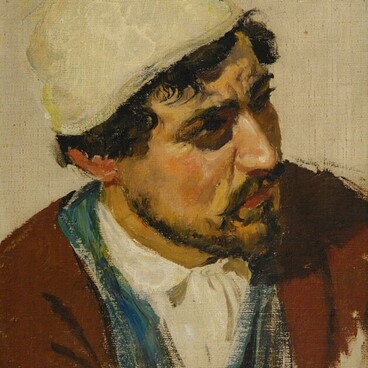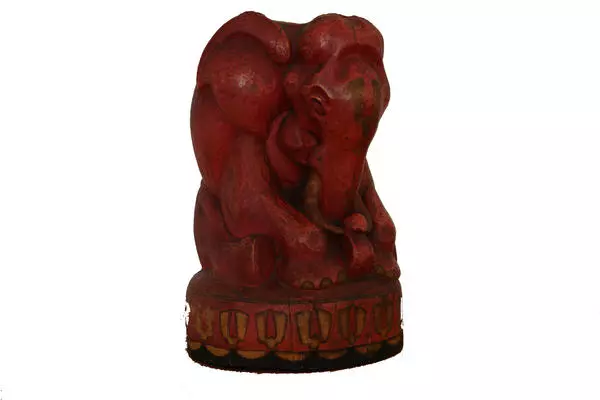Vasily Vatagin (1883-1969) was a creatively gifted and versatile person, he worked in painting, graphics, sculpture. He studied art with Konstantin Yuon, and mastered sculpture on his own. Also having a PhD in Zoological Sciences, he had the ability to convey images of animals not only believably, but also with special expressiveness and a variety of artistic means. Vatagin’s journey to India and Ceylon in 1913–1914, which brought him a lot of impressions of the exotic, was embodied in numerous watercolors, lithographs, and sculptures. From the trip itself, the artist brought back about 180 watercolors.
Since 1914, Vatagin finally settled in Tarusa, which undoubtedly served as the basis for a rich collection of his works created here.
The artist started the series of auto-lithographs “India” in 1919, during his work at the State Free Art Studios, where he taught a course in lithography. After a year, he expanded the series to include 14 landscapes, animal depictions, and temple architecture.
Elephants became the key characters in Vatagin’s works. They were his favorite heroes, especially revered in India. The image of a bathing elephant was later used by the artist in his illustrations for ‘The Mowgli’ by R. Kipling. The peculiarity of the artistic language of ‘India’ is largely due to its technique of lithography, the type of printed graphics of flat printing. The impression was obtained from the surface of a specially processed stone, on which a drawing had already been applied in advance with a special lithographic pencil. In some cases it was done with ink. This method allowed artists to print their own prints on their own and made it possible to convey the author’s artistic language. With small, neat strokes, he created monumental images of animals and subtle curves of human figures, and scenes of religious festivities. The main color of the lithographs was obtained by applying asphalt varnish directly to the stone.
Since 1914, Vatagin finally settled in Tarusa, which undoubtedly served as the basis for a rich collection of his works created here.
The artist started the series of auto-lithographs “India” in 1919, during his work at the State Free Art Studios, where he taught a course in lithography. After a year, he expanded the series to include 14 landscapes, animal depictions, and temple architecture.
Elephants became the key characters in Vatagin’s works. They were his favorite heroes, especially revered in India. The image of a bathing elephant was later used by the artist in his illustrations for ‘The Mowgli’ by R. Kipling. The peculiarity of the artistic language of ‘India’ is largely due to its technique of lithography, the type of printed graphics of flat printing. The impression was obtained from the surface of a specially processed stone, on which a drawing had already been applied in advance with a special lithographic pencil. In some cases it was done with ink. This method allowed artists to print their own prints on their own and made it possible to convey the author’s artistic language. With small, neat strokes, he created monumental images of animals and subtle curves of human figures, and scenes of religious festivities. The main color of the lithographs was obtained by applying asphalt varnish directly to the stone.




